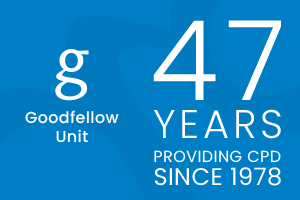
This MedCase was first published in May 2019. It was updated by Dr Hazel Fuiava, MBChB, Dip Paeds, FRNZCGP.
Venous thromboembolism (VTE) is common and includes both deep vein thrombosis (DVT) and pulmonary embolism (PE). Untreated VTE can be fatal. Less severe disease can be chronic and/or recurrent and affects future management of pregnancies, oestrogen use, surgery, travel and life insurance.1
This MedCase discusses the use of rivaroxaban, a fully funded direct oral anticoagulant (DOAC), for treatment of DVT.
Mrs C, a 43-year-old New Zealand European lawyer, comes to see you on a Tuesday morning with a 4-day history of right leg pain. It began on Saturday afternoon and she thought she had strained a muscle during her regular 12 kilometre run that morning, but the pain got worse despite rest. Today her leg seems a little swollen. She denies shortness of breath, chest pain or palpitations. The remainder of the systems inquiry is negative.
On further history, Mrs C tells you that she returned a week ago from a work trip to London. She flew in economy class direct to Auckland with a 3-hour transit in Singapore.
You review Mrs C’s past medical history and note that she has been on the combined oral contraceptive pill (COCP) for the past 6 years, following the birth of her third child. She has no personal or family history of migraines or blood clots. She has never smoked.
On exam, Mrs C has normal vital signs and a normal cardiorespiratory exam. Her weight is stable at 68kg. Her right leg looks swollen below the knee and you detect pitting oedema on palpation. There is also tenderness along the posterior right calf. You measure her calf circumference, 10cm below the tibial tuberosity, and find the right is 35cm and the left is 31cm.
First step: Calculate the risk of DVT
Symptoms of VTE are often non-specific, so it is important to assess individual patient risk and look for potential provoking factors; rates of recurrence and treatment duration vary based on whether a VTE is provoked or unprovoked.1
| Risk factors for VTE | |
| Inherited | Hereditary thrombophilia Deficiencies of antithrombin III, protein C or protein S |
| Acquired: Transient provoking factors | Immobilisation for ≥3 days (e.g. due to acute medical illness or leg injury) Oestrogen therapy* Pregnancy / post-partum Recent surgery within the preceding 12 weeks / trauma Recent long-haul travel** |
| Acquired: Persistent provoking factors | Obesity Smoking Active cancer Non-malignant inflammatory condition (e.g. inflammatory bowel disease) Antiphospholipid syndrome |
* VTE risk is highest in the first year of COCP use; see a Medsafe review of VTE risk with different COCPs.
** Long-haul flights (>4 hours) minimally increase the risk of VTE, usually in patients with pre-existing risk factors.
Many patients will have multiple baseline risk factors, which can be inherited or acquired, and may be persistent or transient (refer to table above). Clinical prediction tools such as the Wells' Criteria for DVT are useful and are often part of the regional clinical pathways for DVT work-up.
Ethnicity should also be considered; the risk of VTE is at least two-fold higher for European than non-Europeans (relative risk vs Māori 1.98, 95% CI 1.63,2.41, vs Pacific RR 3.22, 95% CI 2.60 to 3.99, and vs Asian RR 4.02, 95% CI 3.34 to 4.84). Therefore, if an unprovoked VTE is suspected in an otherwise low-risk Māori or Pacific or Asian patient, be sure to consider an underlying cause such as malignancy.
What do you do next?
You calculate a Wells score of 3 and note COCP use and a recent long-haul flight as compounding risk factors.
Imaging is indicated, and you arrange a right leg ultrasound (available via POAC in some areas).
You send Mrs C for urgent blood tests (FBC, clotting screening including INR and APTT, creatinine, LFTs and a bHCG or urine pregnancy test).
Practice points
- D-dimer is only required if a Wells score is <2.
- Testing for hereditary thrombophilia is not recommended as part of the diagnostic work-up as it offers little utility in decision-making.
- If you cannot obtain an ultrasound scan within 6 hours from the presentation, consider short-term anticoagulation.
- Rivaroxaban is recommended first-line, unless there are contraindications, in which case consider enoxaparin.
- See local health pathways for detailed recommendations around short-term anticoagulation.
The radiologist phones you later that day. There is a distal DVT in the right posterior tibial vein with no evidence of thrombus in the popliteal vein.
You phone your local Thrombosis Service for advice and they suggest you manage Mrs C in general practice with 3 months of oral anticoagulation therapy.

What is rivaroxaban?
There are three options for oral treatment of DVT in primary care: warfarin, dabigatran and rivaroxaban.
Rivaroxaban (brand name: XareltoTM) is a fully funded, direct oral anticoagulant (DOAC). It inhibits factor Xa to prevent thrombin generation, prolonging time to blood clotting.3 Rivaroxaban is an oral tablet available in three strengths: 10mg, 15mg and 20mg.
Rivaroxaban is indicated for:4
- treatment of DVT or PE
- prevention of recurrent DVT or PE
- prevention of VTE following knee or hip replacement surgery
- prevention of stroke or systemic embolism in people with non-valvular atrial fibrillation (AF) and another risk factor (congestive heart failure, age 75 years or older, diabetes mellitus or prior stroke or transient ischaemic attack).
Rivaroxaban is contraindicated in patients with:
- active bleeding or with a high risk of major bleeding (as per the HAS-BLED score in patients with AF)
- severe renal impairment (creatinine clearance <15 mL/min) or on dialysis
- moderate to severe hepatic impairment with coagulopathy
- pregnancy and breastfeeding.
How does rivaroxaban compare with warfarin and dabigatran for treatment of VTE?
Rivaroxaban is as effective as warfarin and dabigatran for treating DVT and PE. The risk of serious bleeding varies; rivaroxaban is associated with fewer intracranial haemorrhages but more gastrointestinal bleeding than warfarin.
Some key clinically relevant differences between rivaroxaban and dabigatran are:4
- Rivaroxaban can be taken once daily (versus twice daily for dabigatran).
- Low molecular weight heparin (e.g. enoxaparin [Clexane]) is required before initiating dabigatran, but not rivaroxaban.
- Rivaroxaban can be given to patients with moderate renal dysfunction (as it undergoes mainly hepatic metabolism).
- Blister packaging is possible with rivaroxaban but more difficult with dabigatran.
- Rivaroxaban may be better tolerated in patients with dyspepsia.
You review Mrs C’s blood tests and note that her CrCl is 94 mL/min, liver function tests are normal, and she is not pregnant.
She is a suitable candidate for rivaroxaban and you prescribe rivaroxaban 15mg twice daily for 3 weeks, then 20mg daily.
You also advise that Mrs C that she will need to stop her COCP now that she has had a DVT, but it does not need to be stopped until she has ceased anticoagulation treatment.
You ask her to think about other forms of contraception, including the progesterone-only pill.
Important information for patients starting rivaroxaban
There are some key things that Mrs C should know before starting treatment:5
- Take rivaroxaban with food, ideally at the same time each day (bioavailability is >99% with food vs ~66% on an empty stomach).
- As with all anticoagulants, there is a risk of bleeding. Tell patients to advise you if they experience any nose bleeds, blood in the urine or stool, or coughing up blood.
- Patients should tell any doctors or dentists they are taking rivaroxaban before undergoing a procedure. Consider a Medic-Alert bracelet.
- Avoid taking aspirin or other non-steroidal anti-inflammatory drugs (NSAIDs) while taking rivaroxaban as there may be an increased risk of bleeding.
- Keep rivaroxaban out of sight and reach of children who could suffer serious bleeding if they accidentally ingest the tablets.
- Information about missed doses:
- patients taking twice-daily rivaroxaban can take the next dose as soon as they remember (two doses can be taken at once)
- patients taking once-daily rivaroxaban can take the dose later that same day if they remember, otherwise resume normal dosing the next day (two doses should not taken at once).
You send Mrs C a link with more information about Rivaroxaban (available from Healthify). She feels comfortable with the information and starts treatment immediately.
You arrange a follow-up visit in two weeks and her symptoms have resolved. She has not experienced any bleeding. She has decided on a Mirena for contraception and you arrange for insertion of this at the next visit.
Practice points
- Rivaroxaban may be preferable to dabigatran when once daily dosing is desirable, there is a history of dyspepsia, or blister packing is require.
- Long-haul flights (≥4 hours) minimally increase VTE risk, usually in patients with pre-existing risk factors.
- Patients can continue taking the COCP until they finish anticoagulation therapy for VTE, then should switch to a non-oestrogen contraceptive.
- Unprovoked VTE is less common among Māori, Pacific and Asian patients and underlying causes should always be sought e.g. malignancy.
This MedCase was created in 2019 by Dr Vicki Mount, MBChB DipPaeds, and reviewed by Dr Eileen Merriman, clinical haematologist and lead thrombosis clinician North Shore Hospital, President of Thrombosis and Haemostasis Society of Australia and NZ (THANZ).
Recognition of Learning Activities
Don't forget to log your time with The Royal New Zealand College of General Practitioners portal for recognition of learning activities.


